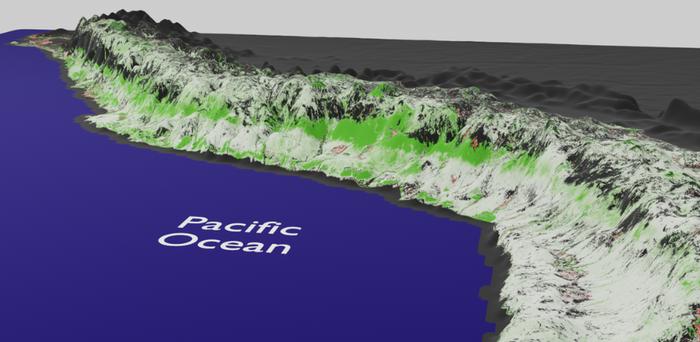In whispers of twilight
the wind carries tales –
murmurs of change,
memories of rain
that etch the canvas
where life’s colours sprawl.
On the Pacific slope,
a dance of light:
greening,
browning,
ebbing,
flowing.
Unexpected patterns
disrupt the night –
jaded tendrils climbing
Andean spines,
tracing sun-starved trails
and weathered vines.
Climates shift,
seasons drift,
maps are drawn
and lost,
the land –
the land endures,
held in the mountain’s
gentle sigh –
the timeless story
of our world.

This poem is inspired by recent research, which has found that the Pacific slope of Peru is greening, and that this is not good news.
Climate, including factors such as temperature and rainfall, largely determines the kinds of plants that grow in a particular area. This relationship is studied using different models, which categorise areas into different climate zones. These zones help us understand what types of plants can grow in each region and how changes in climate might affect them. However, mountainous regions like the Andes in Peru and northern Chile are still not well-understood. These areas are sensitive to small shifts in climate, and changes here can significantly impact local wildlife and ecosystems, which makes studying them very important.
In this study, researchers used satellite imagery to track vegetation changes from 2000 to 2020 along the Pacific slope of Peru and northern Chile, uncovering trends of increasing greenery (i.e., ‘greening’) and areas becoming less green or barren (i.e., ‘browning’). The geographic pattern of greening did not match existing climate zone maps for the region. Trends in the coastal desert and high Andes aligned with climate zones, but the greening strip had an unexpected distribution. This work provides new insights into how climate change may be impacting diverse ecosystems in the sensitive arid and semi-arid environments along the Pacific slope in Peru and northern Chile. The Pacific slope is a critical region for Peru as it supplies water for two-thirds of the country and produces most of its food. However, the swift changes in vegetation, water levels, and ecosystems in this region will unavoidably affect both water and agricultural management strategies.
Discover more from The Poetry of Science
Subscribe to get the latest posts sent to your email.